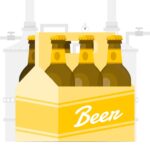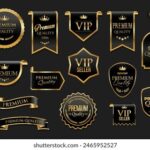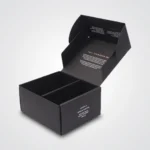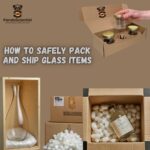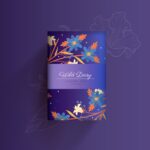How to Choose the Best Packaging Material for your Artwork
The type of packaging used will significantly influence the perception of any customer toward your brand. The choices of font, color, and box design come together to emphasize the products painstakingly developed by you and differentiate your brand from the competition.
Nothing could be more agonizing after much time and effort has been exerted in putting your brand design and packaging inspiration together than to find that it is just not compatible with certain materials. How, then, should this be avoided while creating a fantastic design compatible with your packaging MATERIALS of choice?
Helpful in this regard is familiarizing oneself with some of the materials used on the Panda Scientist products.
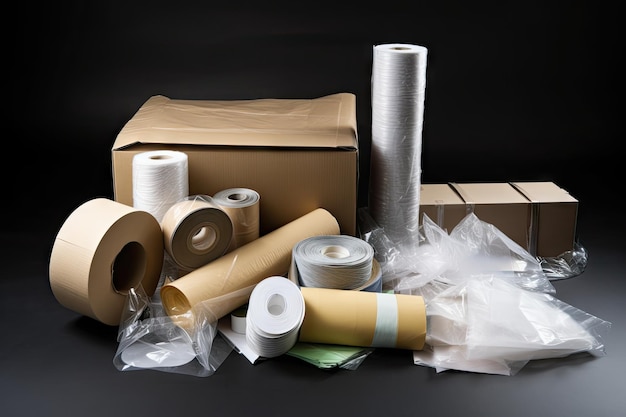
Materials play a huge role in determining the design: It either goes great together or just plain looks awful. If you happen to redesign an existing line, or are just starting from scratch, knowing your material options will help to narrow down the choices for a really eye-catching design, one that will presumably display your products the way you want.
Want to find out more? Keep these tips in mind when it’s time to start working on your artwork.
Choosing the right materials
With regard to your packaging, the color and branding matter; the material you decide on is the basis of that branding.
Primarily, you want to pick a packaging material that suits your product in terms of type, size, weight, and feel.
One bad fit would be to consider paperboard as a core packing material.
Regular packaging materials are:
Corrugated Board: Sturdy and flexible, corrugated stuff is for packing heavier products and works really hard in a variety of needs: from shipping and ecommerce to subscription kits. Panda Scientist corrugated products are Mailer Boxes and Shipping Boxes, which are quite different from Corrugated Product Boxes.
Paperboard : Lightweight and foldable, paperboard is often employed to package products such as cosmetics, retail products, and food goods. Panda scientist produce paperboard product boxes.
Once you settle on the material that fits your product and brand best, consider how the colors and artwork you want to use will look when printed on that material.The good news is that almost anything paper-based can be packaged beautifully under the newest digital technology! Want a simple breakdown of the different options to consider? Take a look at these to see which material fits your brand’s needs best:
Kraft Corrugated
The material gives an authentic touch with a natural, matte feel, understated by traditionally natural brown on the inside and outside of the package. Dark colors are usually preferred with this material since the base color of the cardboard liner will also alter the aesthetic character of lighter colors except white digital ink. By applying the ink digitally, our white is printed bold and bright on the kraft substrates. Inks are cured to give the brand and artwork strong scratch-resistant finishes, keeping logos and art looking clean and maintaining a high quality.
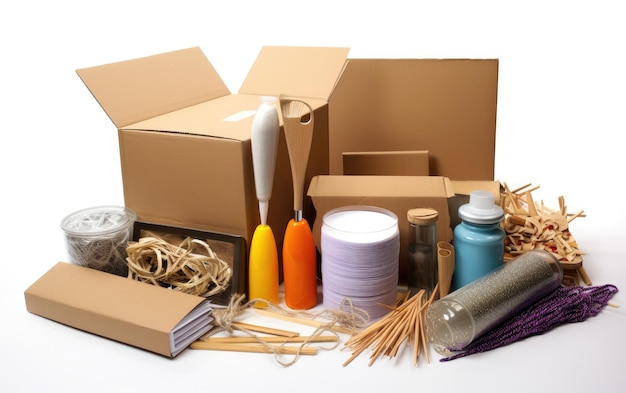
Standard White Corrugated
Standard White differs from Kraft in that the box liner on both the inside and outside is white. This means that all spectrum colors will print well on this material, and essentially be true to hue. Since the inks are somewhat transparent, mottling on the liner due to paper fibers could alter some of the lighter colors somewhat; however, the artwork is sharp and vibrant. Also, this printed area on Standard White receives satin curing, making it ideal for reducing scuffing or scratching while in transit.
Differences between Kraft and Standard White Corrugated
While developing the artwork and deciding on which material to go with, you should also consider how the same design will print on different kinds of corrugated materials. On Standard White Corrugated, lighter and bright colors come out more vibrant and true to their natural colors, while on Kraft Corrugated, the same light and bright colors often come out darker and muted. In general terms, we prefer going with darker colors on the Kraft-regarded neutrals, as that will give them their true color on that stock of their own.
A reference for this would be the West Elm boxes, designed and printed using the exact same artwork. The ink colors for each are the exact same-the only difference is the material upon which that artwork was printed. This speaks to the need to be aware of what material will best represent your brand and desired aesthetic.
100% Recycled Corrugated Kraft
In case you require an economical and environmentally-friendly shipping option, recycled corrugated kraft should fill the bill! It is available only in the Econoflex printing option from Panda scientist, so designs must be worked around printing in black ink only (using halftones).He said in response to the question about how they could use his product without his direction: “Certainly, CAS.”
The 100 percent recyclable corrugated Kraft cardboard consists of 100 percent recycled material. Whether by ink or halftone, any design printed in black can utilize halftone capabilities to get gradients. In terms of print quality, the Econoflex product parallels crisp flexography, giving you maximum expenditure returns to amplify your own design. And if you do choose this route, you don’t need to worry about halftones: we’ll take care of that for you!
Dreamcoat
Incredibly soft and smooth to the touch with a solid white finish not to be confused with Standard White or Kraft, Dreamcoat (or Kemi) is a premium clay-coated corrugated material. The coating has a pure white base for your hues, which ensures a more pronounced printed effect and vivid colors. When considered as a packaging option to create a more brilliant and high-resolution unboxing experience for your consumer, Dreamcoat does wondrous things. After printing, the artwork on this substrate will be cured to be satin or high-gloss (HDPrint) based on your choice of finish.
Nothing adds an extra special touch like HDPrint on Dreamcoat with Panda Scientist. Here, using vivid colors adds an extra level of appeal to the actual packaging. Any darker or deep colors will be glossy, while lighter colors will come out with a sparkly almost matte finish.
What is HDPrint Gloss?
- The advancement of digital printing in technology gets your artwork to the next level with HD Print Gloss.
- When selecting Dreamcoat and this particular print option, some considerations come to mind:
- Finer linework: If your artwork displays fine detail or thinner lines, then HD Print is your best choice. This technology, with its much finer ink dot pattern and increased ink-movement precision, gives your brand artwork or design a higher definition print than would typically be done by regular digital printing on cardboard.
- High-quality finish: This gives for an outstanding package design that speaks and mirrors the deluxe high-gloss finish that many expensive printing techniques offer – yet at a fraction of the price. The printed areas give a high gloss while the unprinted areas are showcasing the white matte material underneath.
- Design flexibility: Update whatever you feel like-giving it as many colors, copy changes, and image additions as it needs. Since HDPrint Gloss has zero printing plate or setup costs, it is time-saving and gives you the flexibility to change your artwork frequently without being tied to any certain design.
Paperboard
At Panda Scientist, 1 style of paperboard material is being offered, exclusive to our Product Box offerings. This material is quite smooth with a clay-coated white top and uncoated bottom. Boxes that have been digitally printed are finished with semi-gloss aqueous coating for protection against box damage from scuffing or scratching. Paperboard is best suited for fine lettering and intricate artwork; it is the number one choice for primary packaging.
Creating custom packaging with success
With Panda Scientist clarifying their distinct styles and options, you should find it easier to figure out which is the best material for displaying your brand on your product.
Last but not least, while designing your custom packaging, stay true to your brand image and your customers’ needs. Perhaps your brand needs to include more single-serves, or maybe the goal is for your packaging to withstand a little more wear and tear during shipping. Use any of our materials to effectively complement your branding!
Well-placed ideas, with just a little more thought, can make the packaging and materials you select appealing to the customer and a perfect fit for your product.


